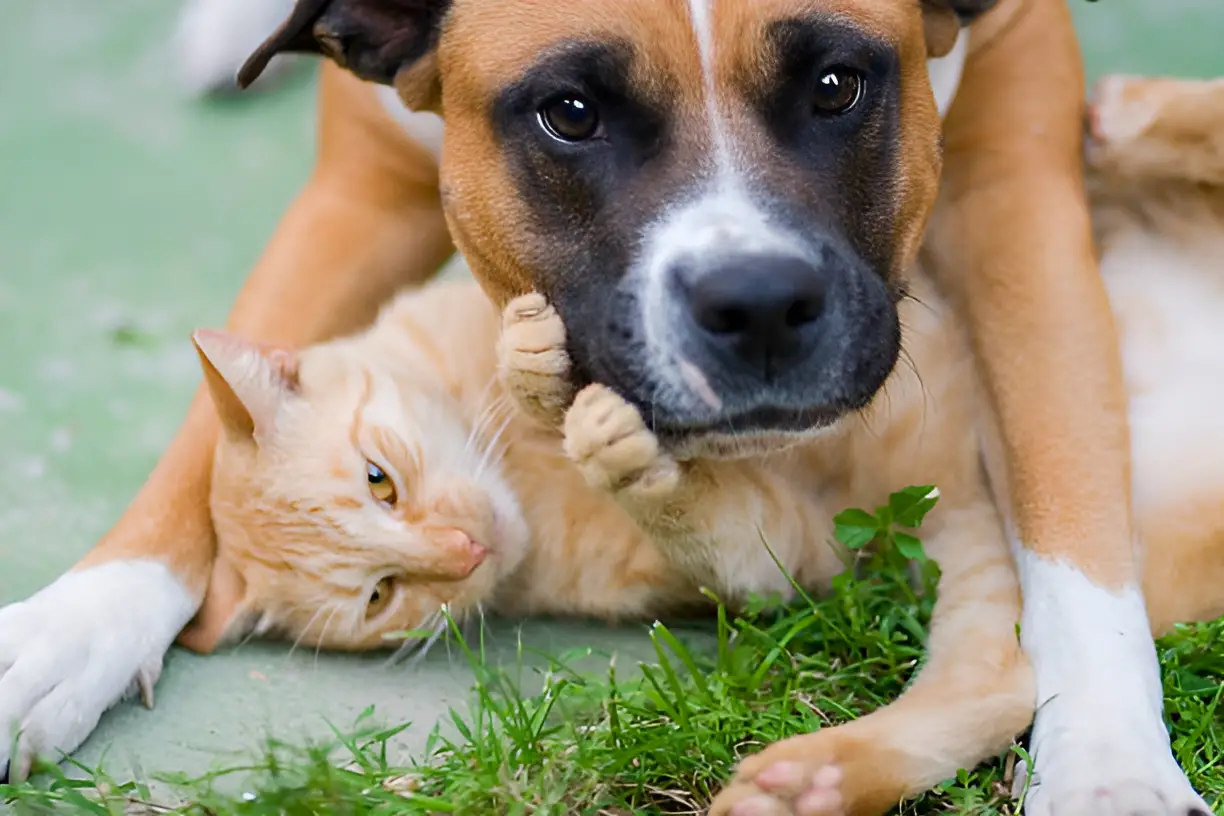Yes, big dogs can be good with cats, but it largely depends on the individual dog’s temperament and proper introduction. Integrating a big dog into a household with cats can be a rewarding experience, but it requires careful planning and understanding of both animals’ behaviors. This comprehensive guide will explore the factors that influence the relationship between big dogs and cats, provide tips for successful introductions, and highlight specific large dog breeds known for their compatibility with feline friends.
Understanding Dog and Cat Dynamics
Temperament Matters: The success of a dog-cat relationship often hinges on the individual temperaments of both animals. Some dogs have a natural prey drive, while others are more laid-back and tolerant.
Early Socialization: Dogs that are socialized with cats from a young age are more likely to coexist peacefully. Early positive experiences can set the stage for a harmonious relationship.
Training and Obedience: Well-trained dogs that respond to commands are easier to manage around cats. Basic obedience training can help prevent unwanted behaviors like chasing or rough play.
Factors to Consider
- Size and Strength: Big dogs can unintentionally harm cats due to their size and strength. Supervised interactions are crucial, especially in the beginning.
- Energy Levels: High-energy dogs may overwhelm cats with their exuberance. Matching energy levels can help ensure compatibility.
- Breed Characteristics: Some breeds are naturally more inclined to get along with cats. Understanding breed tendencies can guide your decision-making process.
Large Dog Breeds Known for Being Good with Cats
Golden Retriever: Known for their friendly and tolerant nature, Golden Retrievers are often good with cats. Their gentle demeanor makes them a popular choice for multi-pet households.
Labrador Retriever: Similar to Golden Retrievers, Labradors are friendly, patient, and typically get along well with cats. Their playful yet gentle nature is a plus.
Newfoundland: These gentle giants are known for their calm and patient disposition. Newfoundlands are often good with cats due to their laid-back nature.
Bernese Mountain Dog: Bernese Mountain Dogs are affectionate and gentle, making them a good match for households with cats. Their calm temperament helps them coexist peacefully.
Boxer: Boxers are playful and energetic but can be trained to be gentle with cats. Proper socialization is key to ensuring a positive relationship.
Tips for Introducing Big Dogs to Cats
Gradual Introduction: Start with short, supervised interactions and gradually increase the time they spend together. Use a baby gate or crate to create a safe space for the cat.
Positive Reinforcement: Reward both the dog and cat with treats and praise for calm behavior. Positive reinforcement helps them associate each other with good experiences.
Separate Spaces: Provide separate spaces for the dog and cat to retreat to when they need a break. This helps reduce stress and prevent conflicts.
Monitor Body Language: Pay attention to the body language of both animals. Signs of stress or aggression should be addressed immediately to prevent negative interactions.
Patience is Key: Building a positive relationship takes time. Be patient and consistent with training and supervision.
Common Challenges and Solutions
- Chasing Behavior: Some dogs have a strong instinct to chase. Training and redirection can help manage this behavior. Use commands like “leave it” or “stay” to control the dog’s impulses.
- Resource Guarding: Dogs may guard their food, toys, or space from cats. Feed them separately and provide individual toys to prevent conflicts.
- Fearful Cats: Cats that are fearful of dogs may hide or become aggressive. Create safe spaces for the cat and allow them to approach the dog on their terms.
Health and Safety Considerations
- Vaccinations and Health Checks: Ensure both the dog and cat are up-to-date on vaccinations and health checks. This helps prevent the spread of diseases and parasites.
- Flea and Tick Prevention: Use flea and tick prevention products to protect both animals. Fleas and ticks can easily transfer between pets.
- Diet and Nutrition: Provide species-appropriate diets for both the dog and cat. Avoid feeding them each other’s food to prevent nutritional imbalances.
Conclusion
Big dogs can indeed be good with cats, but success depends on careful planning, proper introductions, and ongoing supervision. By understanding the dynamics between dogs and cats, choosing compatible breeds, and following best practices for introductions, you can create a harmonious multi-pet household. Remember, patience and positive reinforcement are key to fostering a loving relationship between your big dog and cat.
The photo featured below the post headline is Credit: BiancaGrueneberg/istockphoto
I hope you find this post helpful and informative. If Yes’ feel free to share it with your friends!
Frequently Asked Questions
Can all big dogs get along with cats?
Not all big dogs will get along with cats. It depends on the individual dog’s temperament, training, and socialization.
How long does it take for a dog and cat to get used to each other?
The time it takes for a dog and cat to get used to each other varies. It can take anywhere from a few days to several months, depending on their personalities and past experiences.
What should I do if my dog is aggressive towards my cat?
If your dog shows aggression towards your cat, separate them immediately and seek advice from a professional trainer or behaviorist. Gradual reintroduction and training may be necessary.
Are there any breeds that are particularly bad with cats?
Breeds with a high prey drive, such as some hunting and herding breeds, may be more challenging to integrate with cats. However, individual temperament and training play a significant role.
Can a big dog and a cat share the same living space comfortably?
Yes, with proper training, supervision, and gradual introductions, a big dog and a cat can share the same living space comfortably.

